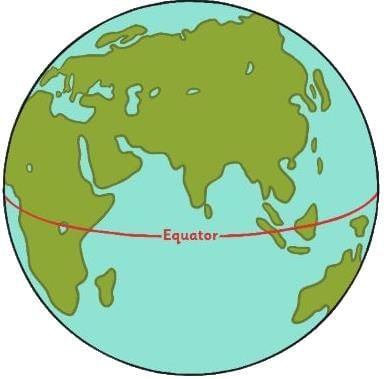Year 6 Exam > Year 6 Notes > Geography for Year 6 > Understanding Latitude and Longitude
Understanding Latitude and Longitude | Geography for Year 6 PDF Download
What is latitude and longitude?
To pinpoint a location on Earth, we use a system of imaginary lines called latitude and longitude.
Latitude lines help us measure how far north or south a place is from the Equator. These lines run parallel to the Equator, which is at 0° latitude. Key lines of latitude include:
- The Arctic Circle, located at 66.5°N, surrounding the North Pole.
- The Antarctic Circle, located at 66.5°S, surrounding the South Pole.
- The Tropic of Cancer, approximately 23.5°N of the Equator.
- The Tropic of Capricorn, approximately 23.5°S of the Equator.
- The Equator itself, at 0° latitude.
Longitude lines indicate how far east or west a place is. These lines stretch from the North Pole to the South Pole. The Prime Meridian, also known as the Greenwich Meridian, is at 0° longitude and passes through London.
What are hemispheres?
- The Equator, located at 0° latitude, serves as the central line dividing the Earth into the Northern and Southern Hemispheres. Locations north of the Equator are in the Northern Hemisphere and marked with °N, while those south are in the Southern Hemisphere and marked with °S. The North Pole lies at 90°N, and the South Pole is at 90°S.

- The Arctic Circle encircles the North Pole at 66.5°N, and the Antarctic Circle surrounds the South Pole at 66.5°S.
- The Tropic of Cancer is positioned roughly 23.5°N of the Equator, and the Tropic of Capricorn is approximately 23.5°S of the Equator.
- The Prime Meridian, or Greenwich Meridian, at 0° longitude, passes through London. Areas east of this line fall in the Eastern Hemisphere and are labeled °E, while areas west are in the Western Hemisphere and labeled °W.
The document Understanding Latitude and Longitude | Geography for Year 6 is a part of the Year 6 Course Geography for Year 6.
All you need of Year 6 at this link: Year 6
FAQs on Understanding Latitude and Longitude - Geography for Year 6
| 1. What is the definition of latitude and longitude? |  |
Ans.Latitude and longitude are a system of coordinates used to determine the position of any point on Earth. Latitude measures how far north or south a point is from the Equator, which is 0° latitude. Longitude measures how far east or west a point is from the Prime Meridian, which is 0° longitude. Together, these coordinates are expressed in degrees (°) and can pinpoint specific locations on maps.
| 2. How do latitude and longitude work together to locate places? |  |
Ans.Latitude and longitude work together as a grid system to provide a unique address for every location on Earth. Each location is identified by its latitude and longitude coordinates, which are usually written in the format (latitude, longitude). For example, the coordinates of the Eiffel Tower in Paris are approximately 48.8584° N (latitude) and 2.2941° E (longitude). This precise combination allows for accurate navigation and mapping.
| 3. What are the different hemispheres, and how are they defined? |  |
Ans.The Earth is divided into four main hemispheres: the Northern Hemisphere, Southern Hemisphere, Eastern Hemisphere, and Western Hemisphere. The Northern and Southern Hemispheres are separated by the Equator, while the Eastern and Western Hemispheres are separated by the Prime Meridian and the International Date Line. Each hemisphere contains different continents and climates, influencing various ecological and cultural aspects.
| 4. Why is the Prime Meridian important in geography? |  |
Ans.The Prime Meridian is significant because it serves as the starting point for measuring longitude. It is defined as 0° longitude and runs through Greenwich, England. The establishment of the Prime Meridian in the 19th century provided a standard reference for navigation and timekeeping around the world, helping to unify global mapping and communication.
| 5. How are latitude and longitude used in everyday life? |  |
Ans.Latitude and longitude are essential in various everyday applications, such as GPS navigation, weather forecasting, and mapping services. Smartphones and navigation devices use these coordinates to provide directions, locate services, and track movements. Additionally, they are crucial for activities like aviation, maritime navigation, and even geological studies, helping people understand and interact with the world around them.
Related Searches
















